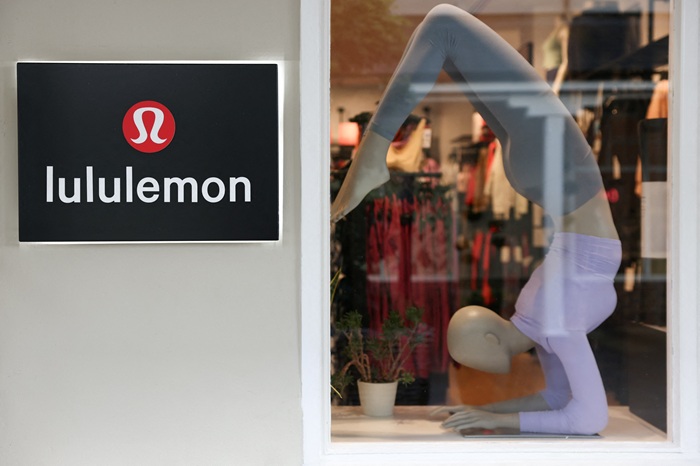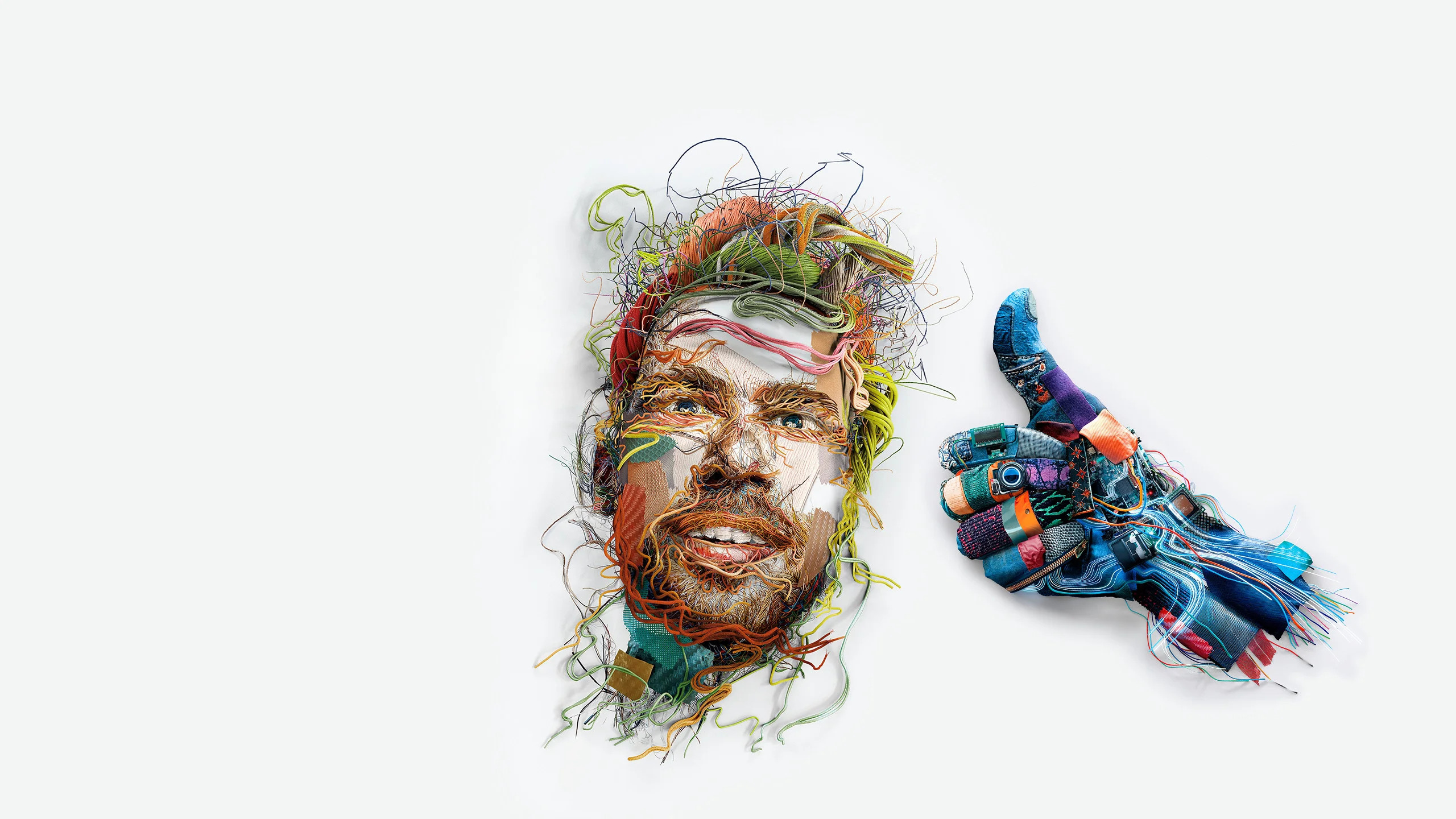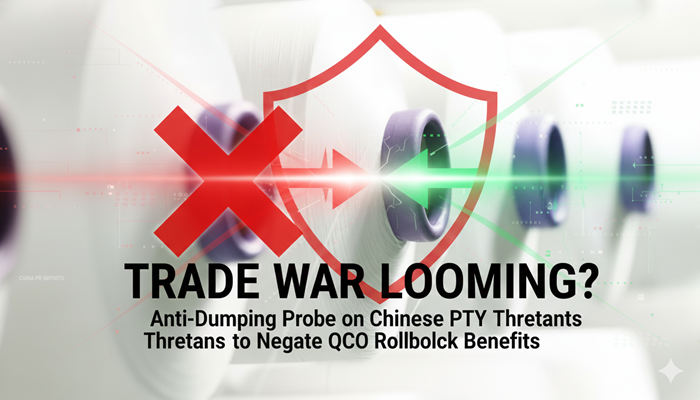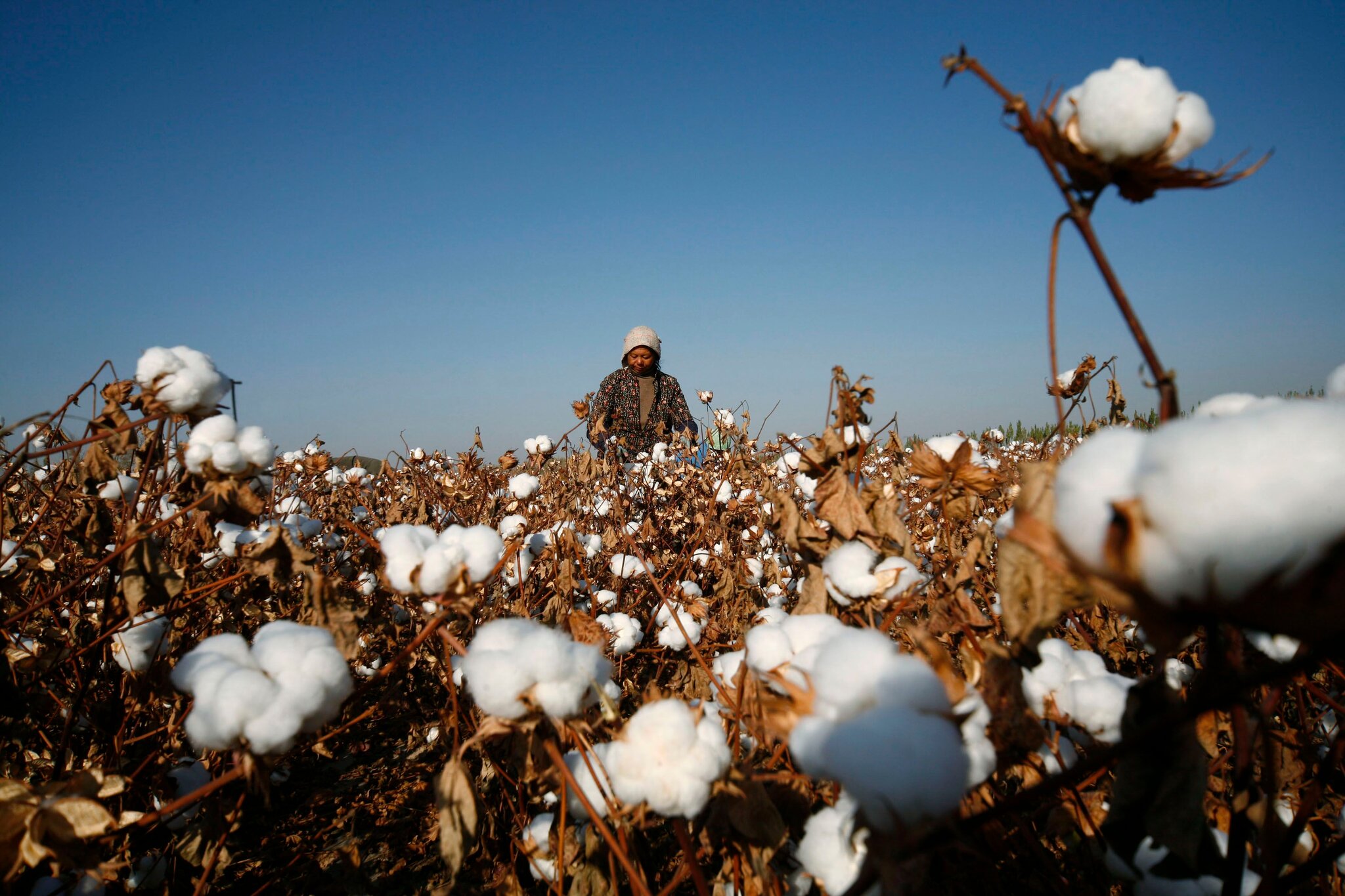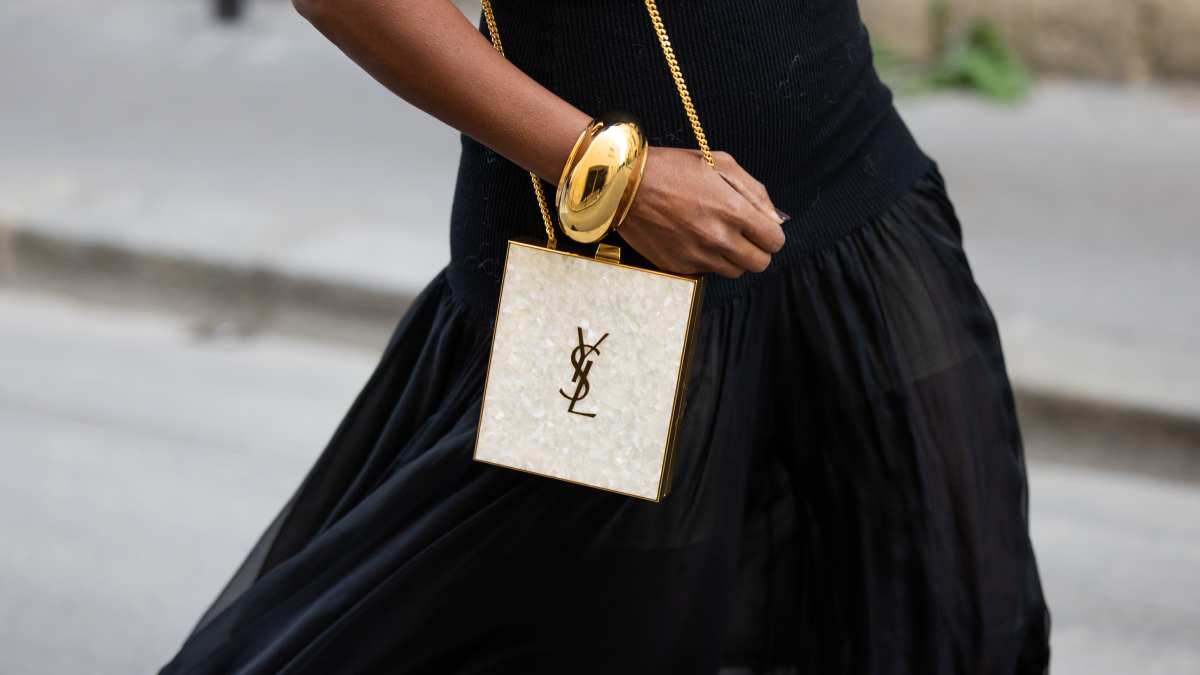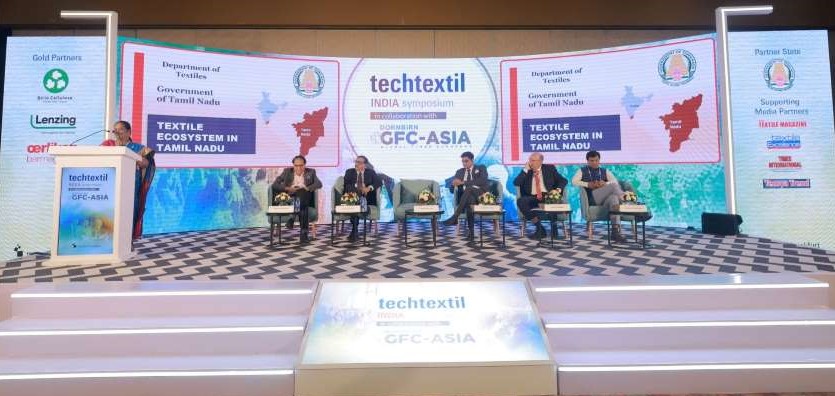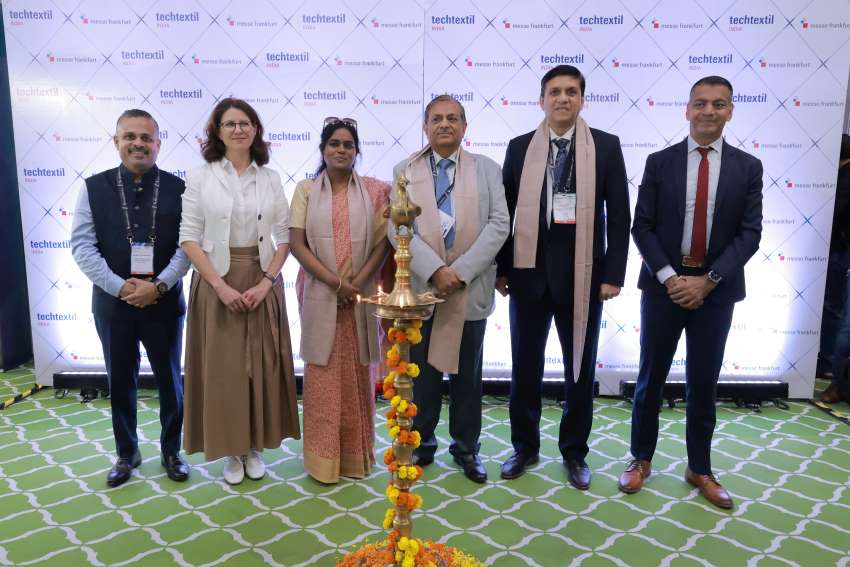FW
In partnership with major global retailers including Bestseller, C&A, PDS, Reformation, and Target, Fashion for Good has launched the ‘Beyond50 Denim: Combining Cottonised Hemp and Green Chemistry’ project. The initiative aims to rapidly accelerate the use of hemp as a core, sustainable alternative to conventional cotton in the denim industry, a market projected to surpass $115 billion by 2029.
The current growth of the denim market is heavily dependent on conventionally cultivated cotton, a fiber whose resource-intensive methods - requiring substantial water and pesticide use = pose a significant environmental burden. While hemp offers a climate-resilient solution that uses fewer resources and improves soil health, its mainstream adoption has been severely limited. Historically, hemp content in denim rarely exceeds 20 per cent because manufacturers struggle to achieve the soft handfeel and aesthetic qualities that consumers expect from cotton.
To overcome this major hurdle, the project is validating the synergistic power of two pioneering innovations. These include the SEFF’s Nano-Pulse Technology, which transforms raw hemp into refined, cotton-like fibers. The second innovation is known as the proprietary chemistry Fihre52. This unique green chemistry solution is applied to impart a softer handfeel to the processed cellulosic fibers.
By combining these technologies, the project aims to demonstrate that hemp content can reliably exceed 20 per cent and reach 50 per cent and beyond in denim applications, all while maintaining performance and aesthetic parity with conventional cotton.
Katrin Ley, Managing Director, Fashion for Good, notes, overcoming barriers to adoption requires more than isolated technical advances. By strategically combining breakthrough fiber technology with green chemistry, the project shows how different innovations can work together to tackle long-standing challenges in the denim industry, she states.
The project includes key manufacturing partners Bossa (Turkey) and Nice Denim (Bangladesh), demonstrating a commitment to validating these solutions within the existing supply chain. This collaborative effort seeks to establish hemp as a mainstream, sustainable future for denim.
Driven by major global trade dynamics and a concerted effort by multinational retailers to diversify their sourcing away from China, India’s apparel export industry is undergoing a significant strategic shift. As per a recent report by Antique Research, the country’s strong manufacturing base, competitive labor costs and rapidly expanding product capabilities make it a key beneficiary of this transition.
While competitors like Bangladesh and Vietnam have historically dominated global apparel exports, India is quickly gaining ground. This shift is fueled by geopolitical realignments, trade tensions, and the rising global emphasis on building more sustainable and diversified supply chains—the so-called ‘China+1’ strategy.
This structural change is opening new doors for Indian garment manufacturers, supported by several domestic improvements, notes the report. These include an improving infrastructure and supply chain efficiency, incentives like the Production-Linked Incentive (PLI) schemes and enhanced adherence to international standards.
The United States and European Union remain India’s largest apparel markets, showing renewed interest in key segments like cotton garments, knitwear, and value-added fashion apparel.
Despite the positive momentum, the report warns of substantial challenges, primarily centered on market access. For instance, India lacks Free Trade Agreements (FTAs) with key markets, resulting in high import tariffs. For instance, Indian apparel exports to the EU face average tariffs of 9–12 per cent, while competitors like Bangladesh enjoy zero-duty access under the EU's Everything But Arms (EBA) initiative.
These tariff disadvantages are eroding India’s price competitiveness, making exports -especially in ready-made garments (RMG) and home textiles - less viable.
The industry is optimistic that a significant 25 per cent tariff could be lifted by the end of the fiscal year.
Beyond tariffs, Indian producers still grapple with hurdles like compliance costs, volatile cotton prices, and a fragmented manufacturing ecosystem. However, the forthcoming FTAs with the UK and EU are critical to leveling the playing field, the report notes.
If tariff barriers are successfully addressed and domestic supply chain reforms continue, India is well-positioned to significantly increase its market share of the $500-billion global apparel export market over the next decade.
India’s upcoming Diwali festival is expected to register record-breaking retail sales this year, marking the strongest festive season performance in a decade. The textiles and garments sector is forecast to be one of the main beneficiaries, even as potential challenges from the global market loom for exporters.
According to estimates from the Confederation of All India Traders (CAIT), Diwali trade could surpass Rs 4.75 lakh crore ($53.50 billion). Recent reductions in GST and Prime Minister Narendra Modi’s ‘Vocal for Local’ (Swadeshi) campaign are expected to give a significant boost to domestic traders, opines Pravin Khandelwal, Secretary, CAIT
Khandelwal states, this year's Diwali is likely to ‘illuminate homes and brighten the fortunes of small traders, manufacturers, artisans, and service providers across India.’
Markets across the country, from traditional bazaars to large shopping malls, are projected to see strong consumer turnout. Textiles and garments are expected to account for roughly 12 per cent of total festive expenditure, driven by a growing preference for domestically and locally made products. This momentum reflects the success of the Atmanirbhar Bharat (self-reliant India) initiative, with locally produced Swadeshi textiles expected to dominate sales.
According to industry analysts, the textile sector faces a mixed outlook. While robust domestic demand is certainly expected to lift sales, potential US tariffs on textile imports could put a drag on export performance. In response, manufacturers in major textile hubs such as Surat, Ludhiana, and Tiruppur are reportedly ramping up production to meet the huge festive demand at home and offset any possible international headwinds.
Emphasizing on the festival’s wider importance, Khandelwal states, Diwali is not just about lighting lamps but about powering the entire economic ecosystem of Bharat.
Overall, the Diwali season is set to highlight the resilience of India’s domestic retail market. Strong consumer sentiment and patriotic purchasing are expected to sustain growth, reinforcing the growing importance of local demand in supporting the textile and garment industry against international pressures.
The Bangladesh Garment Manufacturers and Exporters Association (BGMEA) plans to develop an AI-enabled Environmental, Social, and Governance (ESG) compliance framework called the 'Digital Factory Passport (DFP).' This initiative aims to significantly boost transparency, accountability, and global competitiveness within the country's apparel sector.
The DFP is designed to act as a unified digital tool to streamline data management and reporting at the factory level. The system is expected to not only reduce audit fatigue for factories but also improve efficiency in monitoring sustainability performance and help factories align with international buyers’ requirements using a standardized, AI-driven approach.
According to the BGMEA, this initiative is a crucial step towards future-proofing Bangladesh’s position as a global sourcing hub.
Mahmud Hasan Khan, President, BGMEA, emphasizes, innovation and digital transformation help advance the sector’s sustainability goals. Representatives from Digital Bridge Partners reaffirmed their commitment to supporting the industry with digital solutions that lead to greater efficiency and transparency.
According to a new knowledge paper released by the Confederation of Indian Textile Industry (CITI), India needs a multi-pronged strategy to strengthen ‘farm to factory; practices in its cotton sector and build export-ready ecosystems to meet the national target of $100 billion in textile exports by 2030.
The paper argues, the Indian cotton sector is at a critical crossroads where long-term growth hinges on the convergence of sustainability, innovation, and trade competitiveness, given the current challenges facing cotton production.
To secure a competitive edge in global markets, CITI calls on the government and industry to focus on promoting production of high-quality cotton by using certified seeds and sustainable farming practices. It should implement traceability systems and global certifications to guarantee consistent quality. The government should actively promote organic, fair-trade, and circular farming models. These sustainable cotton variants can command 20 per cent to 30 per cent higher prices in premium global markets.
Further, the paper states, there is a need to streamline procurement and stabilization mechanisms to ensure farmers receive better prices and reduce reliance on middlemen.
It also emphasizes, collaborative efforts between farmers, industry, and policymakers are crucial for ensuring Indian textiles consistently meet global benchmarks for quality, sustainability, and ethical sourcing.
Finally, the report highlights the necessity of supporting industry-led innovation in smart textiles and organic blends. This is particularly important given that India’s technical textiles market is already projected to reach $40 to $50 billion by 2025. Coordinated action, backed by strong policy, investment, and technology transfer, is essential for securing the sector's long-term future.
B2B platform dedicated to connecting men’s fashion buyers, retailers, and brands, Shift is moving to a new, inspiring location called the Kromhout Hall in Amsterdam.
Along with the move to the spacious new hall, Shift is also introducing a revamped format: the event will now take place over a single, compact day on January 19, 2026. A one-day setup better fits the demanding schedules of men’s fashion buyers and retailers, making attendance more efficient and effective..
The Kromhout Hall not only accommodates the familiar plug-and-play system but also offers more room for open-space concepts. This flexibility gives brands the opportunity to build their own custom stands or create dynamic shop-in-shop experiences. The result is a more dynamic event where visitors can explore brands, trends, and innovative concepts in multiple ways.
This year, the Reframe concept returns within Shift, serving as a dedicated platform for companies that do not offer clothing collections but are vital to the future of retail. A curated selection of these businesses will demonstrate how design, storytelling, and technology help stores connect more powerfully with their customers. Visitors are encouraged to rethink their retail spaces, recognizing that retail is now about experience, emotion, and relevance, not just products.
To make the visit even more enjoyable, Shift is offering free entry along with a selection of complimentary snacks and refreshing drinks, provided by the organization and its partners. Launched in January 2025 by the co-founders of Modefabriek, Shift aims to be an accessible yet professional men’s fashion platform focused on quality, inspiration, and connections. The move and the new one-day format mark a significant next step in the event’s development.

Delivering a compelling message on the future of the cotton industry in a virtual address at the Global Cotton Conference, renowned global consultant in cotton analytics, Dr Terry Townsend, argued that the path forward lies in a dramatic acceleration of technology, particularly in seed science, to combat stagnant production and declining prices. The key is striking a delicate balance between fostering innovation and protecting the intellectual property (IP) that drives it, he said.
The Global Cotton Conference was organized by India’s Ministry of Textiles and CITI on October 7, 2025,
The new frontier of seed technology
Townsend highlighted a global trend toward conscious mechanization and advanced seed technology. He pointed to major cotton-producing countries like the United States, Brazil, and Australia, where farmers are increasingly planting seeds with multiple ‘stacked gene’ biotech traits. These traits are the product of significant research and development, essentially enabling cotton plants to achieve higher yields and effectively resist climate-related stresses, pests, and diseases, he explained.
For nations that do not permit biotech crops, scientists are developing a new subset of gene-bending technologies. These innovations help non-biotech nations adopt some of the desired traits through dedicated breeding processes, ensuring that innovation benefits the entire global market. This push for advancement is accelerating, fueled by breakthroughs in AI, GPS systems, and precision agriculture. These cutting-edge tools allow for the precise application of inputs like seeds and chemicals, maximizing efficiency in the field and critically boosting yields.
Townsend emphasized, this technological growth is a necessary response to a persistent global challenge: while world cotton production has held steady at around 25 million tons for two decades, real cotton prices have been on a continuous downward trend for over 50 years. This downward pressure on prices is unforgiving, meaning that businesses must become dramatically more productive simply to remain profitable.
The high cost of innovation and the IP imperative
While the benefits of technology are clear and desperately needed, Townsend was quick to point out a major hurdle: technology development is expensive. The research, development, and commercialization of a single seed variety can cost millions of dollars and take years of work. As a result, companies simply won't invest the required capital into new technologies if they aren't guaranteed a viable return on their investment.
This brings the issue of intellectual property (IP) protection to the absolute forefront. Townsend asserted that strong, enforceable IP laws are essential for creating an environment where technology developers feel secure enough to invest their resources. Without it, the flow of new, critical technologies to farmers will slow dramatically. This stagnation would make it difficult, if not impossible, for the industry to keep pace with global population demands and the increasing severity of environmental challenges. He noted clearly that countries with robust research systems and strong IP protection are the ones that will continue to grow and lead the industry into the future.
A sustainable future through technology
Beyond purely economic concerns, Townsend also touched on the critical role of technology in achieving sustainability. He noted, consumer and regulatory concerns about the environmental impact of cotton are growing steadily. He opines, technology is the critical mediator in making the world's cotton production more sustainable. The ability to use precision inputs and develop climate-resilient crops will not only secure better yields but also help the industry overcome the destructive extremes of climate change.
Italian textile machinery manufacturers are set to make a major impact at ITMA Asia + CITME Singapore 2025, taking place from October 28 to 31.
Despite geopolitical uncertainties, over 100 companies from Italy will showcase their latest innovations across 4,000 sq m.
Around 53 of these Italian exhibitors will be grouped within the National Sector Groups, organized by ACIMIT (Association of Italian Textile Machinery Manufacturers) and the Italian Trade Agency (ITA).
ITMA ASIA + CITME remains the essential showcase for machinery manufacturers targeting the Asian market, which currently accounts for 50 per cent of global exports, valued at €8.8 billion in 2024. China and India are the leading importers, making the region crucial for Italian firms. In 2024, Italian textile machinery exports to Asia reached €664 million. In H1, FY25, sales to the area continued to grow, reaching €317 million, with China, India, Pakistan, and Bangladesh being the primary destinations for Made in Italy technology.
Marco Salvade, President, ACIMIT notes, the event provides an excellent opportunity to display their updated technological supply. The choice of Singapore allows Italian exhibitors to engage with many Southeast Asian markets, which are becoming increasingly important manufacturing hubs, he said.
Italian manufacturers will present a wide array of advanced solutions covering the entire textile value chain. Visitors can expect to see digitalization tools for better efficiency, automation systems for smarter production, and a strong focus on sustainable technologies. This includes machinery designed to optimize energy and water use while maintaining high quality, combining Italy's textile tradition with cutting-edge innovation.
Giorgio Calveri, Director, ITA Singapore, confirms, with 86 per cent of its €2.1 billion production exported, Italy’s textile machinery industry views ITMA Asia + CITME as a strategic opportunity to reinforce its position as a trusted partner for advanced, sustainable, and competitive technologies in the key Asian region.
UK-based Fibre Extrusion Technology is launching its FET-500 Series of Gel Spinning Systems to transform the research and development of Ultra-High Molecular Weight Polyethylene (UHMWPE) fibers.
FET has an established reputation for innovation and expertise in medical fiber extrusion, providing high-performance, specialized equipment for precursor medical products, including custom systems for making both absorbable and non-absorbable sutures. FET’s equipment is designed for flexible, small-scale production and rapid product development.
In recent years, the demand for R&D in UHMWPE fibers has grown significantly. These fibers are highly valued across many industries for their exceptional properties. However, current production methods are complicated and focused on the massive, large-scale output of existing fiber grades. This rigid supply chain has slowed down innovation in this promising, untapped product market.
Set to fill this market gap, the FET-500 gel spinning systems offers a flexible and consistent process, capable of producing high-quality fibers using less than 100 grams of polymer. Crucially, it avoids the harsh processing chemicals that were traditionally used in gel spinning.
The key to this lab and pilot-scale flexibility is a patent-pending process that uses supercritical carbon dioxide (scCO2) as a green solvent.
While gel spinning starts with extrusion, the follow-up steps of washing and drawing are vital for achieving the final performance characteristics of the yarn. The use of patent-pending Supercritical Carbon Dioxide in the washing process is just one example of the system's many innovative features and benefits.
FET's Fibre Development Centre in Leeds, where the manufacturing takes place, was crucial to the creation and success of the FET-500. Having this facility on-site allows FET to offer a way for customers to de-risk, develop, and demonstrate the system’s capabilities.
FET maintains a complete, operational demonstration line of the FET-500, enabling both existing and new customers to visit and see the system running from start to finish. FET can also assist in developing new products and operating parameters through R&D trials, giving you the confidence and knowledge needed to successfully transfer a new offering onto a full production line.
The MarediModa Cannes trade show is returning to the French Riviera's Palais des Festivals from October 22 - 24, 2025. This essential industry event will exclusively feature over a hundred new collections of fabrics and accessories for Summer 2027 beachwear, underwear, and athleisure from Europe's top textile manufacturers.
MarediModa continues to serve as the definitive showcase for premium and upper-medium market fabrics, pairing business with creative inspiration.
Visitors will get exclusive, early access to the official Spring/Summer 2027 Trend Book, ‘Making Waves.’ The theme encourages the fashion community to go beyond surface aesthetics, challenge norms, and drive meaningful transformation toward a more conscious future.
The show highlights young talent through The Link, a premier talent-scouting competition. In 2025, the contest achieved a record-breaking year with 128 projects submitted from 37 countries. Nine finalists, who explored creative boundaries in beachwear, underwear, and athleisure, will present their creations in a dedicated atelier and feature in a fashion show on October 23.
MarediModa is moving past static displays with three new experiences: Flash! (bringing beachwear fabrics to life through prototype garments and exclusive photo/video shoots), ATH (exploring athleisure trends where fashion meets performance), and Seam (celebrating private label craftsmanship).
The event also champions sustainability and excellence. The Lycra Company will host a key seminar on October 22 titled, ‘From Fiber to Sustainable Swimwear: A Blueprint for Collaboration,’ addressing how innovation and partnership are reshaping the future of fashion.
Furthermore, the prestigious French brand Eres will be honored with the 2025 Creative Excellent Award for its lasting contribution to fashion, product excellence, and its iconic, minimalist approach to lingerie and beachwear.
Since its founding in 2002, MarediModa has established itself as the leading international show dedicated to European textile excellence, focusing on quality, sustainability, and creativity to shape the future of intimate and swimwear apparel.


